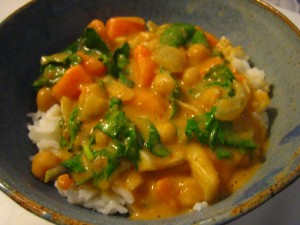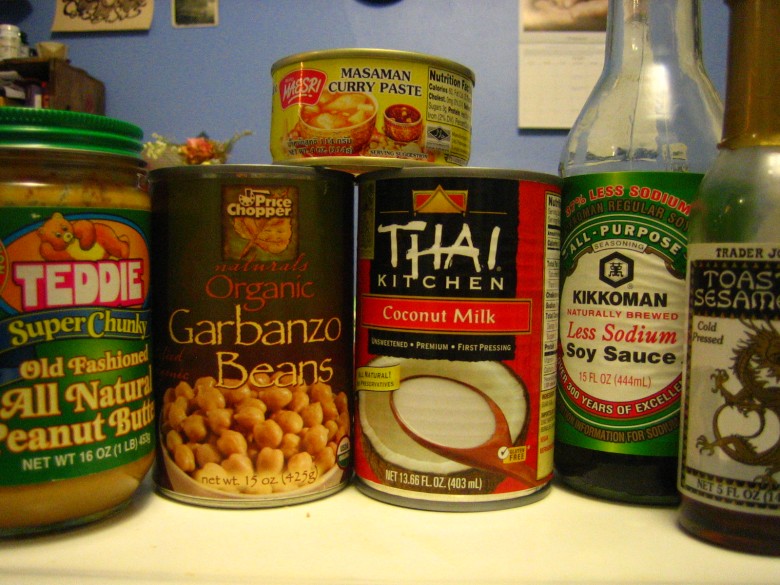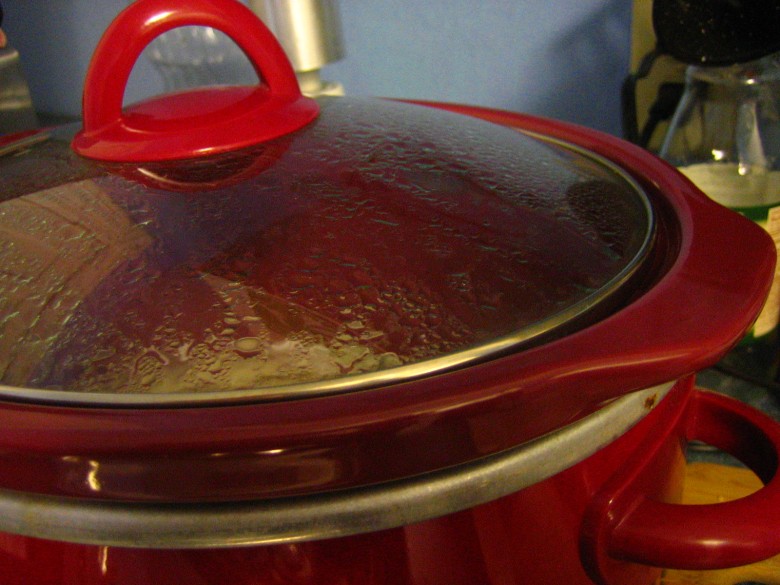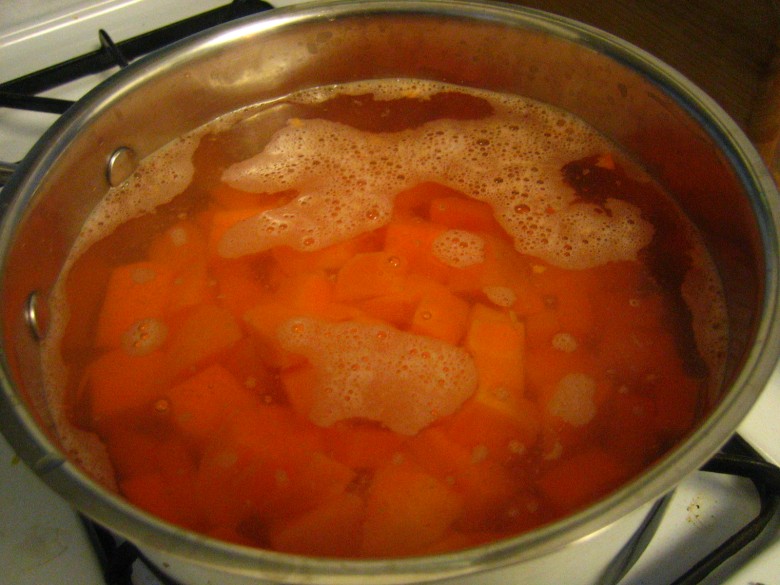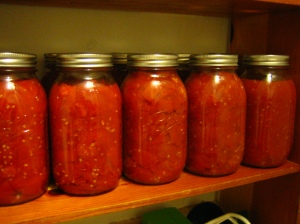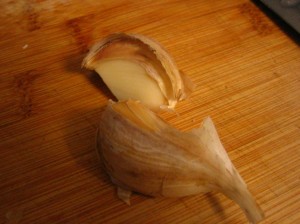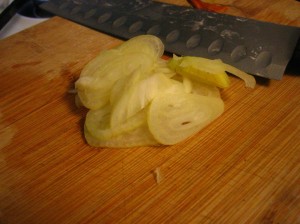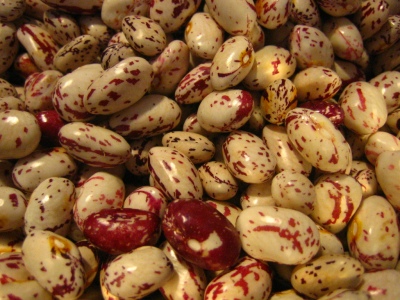Faced with cans of chickpeas and little fresh food, I opened up one of my favorite cookbooks: Crescent Dragonwagon’s Passionate Vegetarian. This was my first vegetarian cookbook and I’ve been finding lots of great recipes in it now that I have consistent access to a real kitchen – it comes highly recommended! I came across her recipe for baked falafel, which at first glance seemed atrocious. Then I thought about the time and mess created by frying and decided to give the baked recipe a try. It was surprisingly tasty. Not at all the same as regular fried falafel, but worthwhile in its own right.

(Serves 3-4 people with stuff on the side; takes about 15 minutes to prepare, 30 minutes+ waiting, and about 25-30 minutes baking – all in all, little over an hour)
Ingredients:
1/4 cup bulghur (cheap & great for soups; check the bulk bins at a natural foods store or co-op)
1/2 cup water
1 (15-16 ounce) can chickpeas, drained & rinsed
3 decently-sized cloves of garlic (more if you’re a big garlic fan) – coarsley chopped, as they’ll be going in the food processor
1 egg
1/2 teaspoon salt + extra at the end
1/2 teaspoon cumin + extra at the end
1/4 teaspoon black pepper
1/4 teaspoon ground tumeric
1/4 teaspoon ground coriander
Pinch of cayenne
At least 2 tablespoons coarsley chopped parsley (we use about 4 tbsps of frozen parsley for this & it worked fine)
1/3 cup fresh breadcrumbs
(DIY Breadcrumbs: Toast bread until it’s very dry. Be careful not to let it burn; if parts burn, cut them off. Chop it up.)
Directions:
1. Boil about a cup of water. Pour the water over the bulghur and cover the bowl. Set aside to soak for at least 20 minutes. (This is a very imprecise thing, so no need to get fussy with the details. Bulghur is forgiving, tasty, filling, and cheap – what more could you ask from a grain?)
2. Place half of the chickpeas in a medium-sized bowl and mash slightly with a fork, potato masher, or your hands. (I used a round ladle to mash it at first, then finished off with my hands.) They should still have some texture when you’re done.
3. Place the other half of the chickpeas in a food processor with the garlic, egg, salt, cumin, pepper, tumeric, coriander, and cayenne. Process until smooth, pausing several times to scrape down the sides of the bowl. Add the parsley and breadcrumbs, then process until it’s smooth.
4. Combine the mixture from the food processor with the mashed chickpeas and the soaked bulghur. Stir it around until it’s evenly mixed. Taste and add more spices as you like. Stick the bowl in the fridge for at least 30 minutes, more if you have the time to wait. This allows the mixture to firm up a bit and will make your life easier vis a vis shaping the falafel.
This waiting period is a great time to whip up some tahini sauce (see below), tdzaki, or whatever you like to eat with falafel. Plain yogurt works fine! Also, five minutes before pulling out the batter from the fridge, turn on the oven and preheat to 350F.
5. Remove the falafel mix from the fridge and grease a baking sheet. Shape the falafel mix into slightly flattened disks. We made about 25 that were about 1-1/2″ in diameter. Bake for about 25 minutes (we found that it took about 35, even with our usually hyperactive oven), then flip the falafel over and bake for about 5-10 minutes. They should be nice and golden brown.
Coconut Tahini Sauce
Thanks to Mark Bittman for the recipe! Excellent with falafel, or greens, or pretty much anything.
Ingredients:
1/2 cup tahini
Juice of 1 lemon (I used a lemon that had already been squeezed once for tea, and it worked fine.)
2 cloves garlic
1/2 cup coconut milk (about half a can)
1/2 teaspoon ground cumin
Salt and black pepper
Directions:
1. Put the tahini, coconut milk, lemon juice, garlic, and cumin into a food processor. Add some salt and pepper. Process until smooth.
2. Taste and add more spices, lemon, coconut, etc. until you like how it tastes. Serve immediately or cover tightly and refrigerate.


